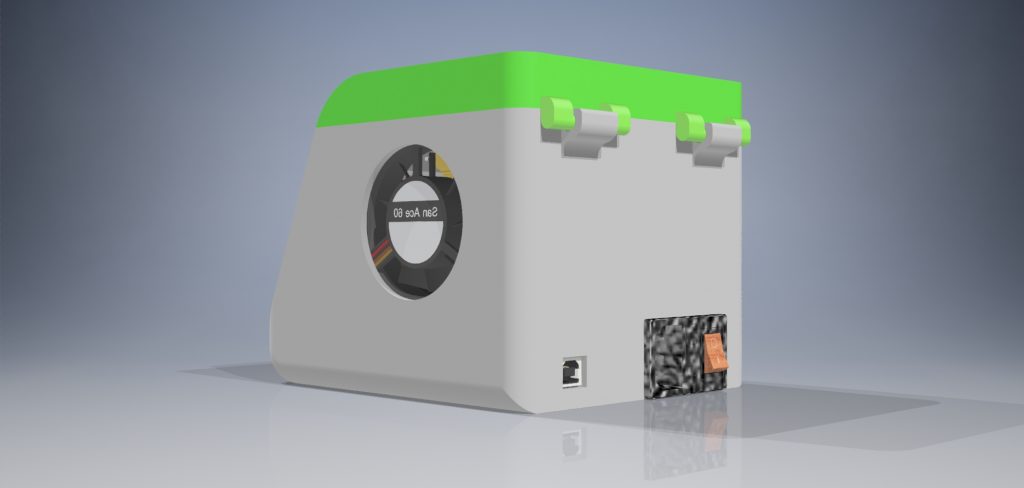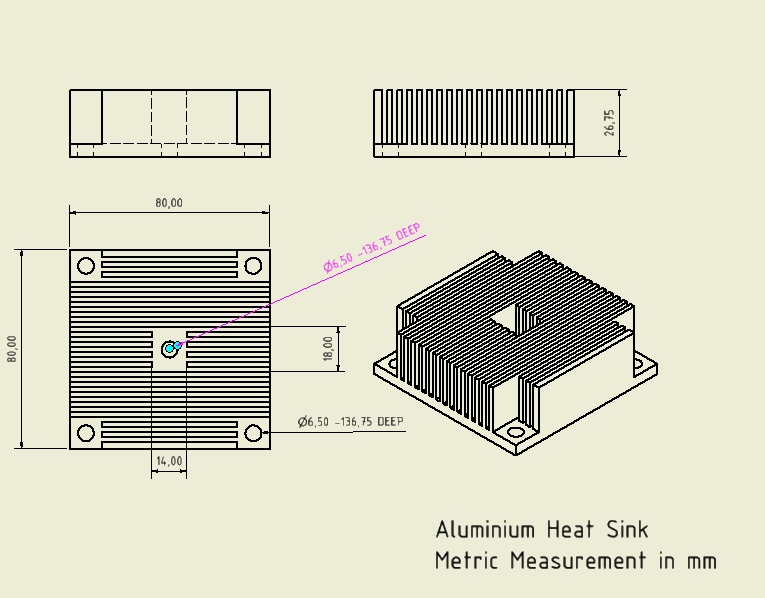Abstract
PCR devices are expensive. Even the simplest models start from $600. Since the reaction is very easy to control via temperature control and the components are cheap to obtain, this project will build an attractive, functional and inexpensive PCR thermal cycler. Wirewound resistors are used as heating elements. The housing is 3D printed from ABS plastic and the aluminum heating block is made in several parts on a 3-axis CNC milling machine. A Nextion touch display is used to simplify user interaction. The material costs remain consistently below $100.
Introduction
Paternity tests, hereditary diseases and virus infections. The invention of the polymerase chain reaction (PCR) by Kary B. Mullis in 1983 is indispensable for the clarification of these and other questions of gene technology. The sequencing of the human genome until 2003 would simply not have been possible without this technology. Today, the application of PCR represents an essential step in a multitude of molecular biological workflows.
Through a defined cycle of heating and cooling processes, certain deoxyribonucleic acid sequences (DNA) of interest can be exponentially amplified in interaction with certain reagents. Only in this way is a qualitative detection and comparison possible.
The iterative mechanism is as follows: At 94 °C, the previously isolated DNA fragment is split into its two single strands over 30 s using heat (denaturation). A DNA primer is then attached to the previously separated strands (annealing) for about 20 s – 30 s at about 54 °C. If the temperature is now raised to 72 °C, the polymerase, or more precisely the Taq polymerase, binds to the primers and completes the individual strands with the free nucleotides to form a new double strand (elongation). The duration of this process depends strongly on the length of the sequence. As a rule, a value of 60 s per 1000 base pairs is assumed. The initial one double strand has now become two double strands. The cycle is now repeated about 30 times to obtain a sufficient number of copies of the original sequence. In addition to the cycle shown in Figure 1, an initial 5-minute denaturing is performed at the very beginning before the start of the first cycle. Finally, after the cycles, the last elongation is carried out for 5 minutes and finally the temperature is lowered to 4 °C to inactivate the enzymes used.
In the meantime, the method has been optimized and further developed many times. With qPCR (Real-Time-PCR), which can display the progress of the amplification in real time through the use of dye molecules, the conventional PCR has been replaced in everyday laboratory routine. For simple detection, however, these conventional thermal cyclers are still frequently used in research and university laboratories.
The heating and cooling process in commercial machines is usually achieved by using a Peltier element. This electrothermal semiconductor element has a compact design, but in return – due to its low efficiency – has a high electrical power consumption.
In this project a low-cost, compact PCR thermal cycler made of simple components will be designed and built. With a glass transition temperature of over 100 °C, the housing, which is completely printed from ABS plastic 3D, can withstand the requirements of max. 95 °C. It will be equipped with a 4.3″ TFT Nextion touch screen display to allow autonomous user interaction and to show the current process progress (The in this case relatively expensive Nextion display can of course be replaced by a much cheaper LCD display with encoder control to save costs). The heating element itself in this project consists of four wirewound resistors (á 1 kOhm), which are controlled by a solid-state relay (SSR). The control circuit is equipped with a temperature probe as sensor, an Arduino Uno serves as microprocessor to implement the thermal cycle and user inputs. At the heart of the device are three milled aluminium parts which together form the heating block and are connected by means of cylindrical pins. Power is supplied by a 12 VDC power supply unit, which delivers 5 A and supplies the microcontroller and thus the display, but also the fans. A subsequent PID tuning ensures the efficiency and precision of the temperature cycles. To verify the method, a gel run should confirm the success of the amplification.






Materials & Methods
Components
- Wirewound resistors 1 kOhm ($0.7) (x4)
- Arduino Uno Clone ($4)
- Power-Supplay 12 V 5 A ($2)
- SSR-Relais ($3)
- Nextion 4.3″ Touch-Display ($40)
- 60*60*10 mm 5 VDC Fan ($3) (x2)
- MAX6675 Thermocoupler ($3)
- 250 V AC 10 A 3-Pin Power Socket ($1)
- Aluminium plate (100x100x5 mm) ($4) (x2)
- Aluminium-Block (50x50x50 mm) ($9)
- Aluminium-Heat-Sink ($13 or $8) (buy or mill)
- straight pins (10 mm) ($4) (x8)
- Compression springs (15×5 mm) ($1.5)
- ABS-Filament
Software
- Autodesk Inventor Professional 2019 (Build: 265, Release: 2019.2)
- Fritzing beta (Ver. 0.9.4 )
- Arduino IDE 1.8.10 (Board: Arduino Uno, Programmer: AVRISP mkII)
Source Code
Results
Work in progress, but almost finished, missing steps: aluminum parts CNC milling, assembly, tests.

